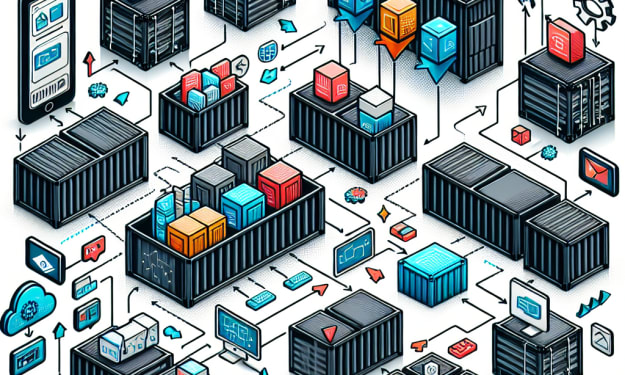The role of virtual reality in education and training
education and training

Virtual Reality (VR) is a technology that has been gaining significant popularity in recent years. It has found applications in various fields such as gaming, entertainment, and even education and training. In this article, we will discuss the role of virtual reality in education and training and how it can transform the way we learn and develop skills.
Introduction
In the traditional classroom or training environment, learning can be limited to textbooks, lectures, and PowerPoint presentations. However, with the emergence of virtual reality technology, education and training can now be enhanced by providing students and learners with an immersive and interactive learning experience.
Virtual Reality has the ability to transport students and learners to a virtual world where they can interact with objects, simulate real-life scenarios, and learn in a safe and controlled environment. This has made virtual reality a valuable tool for educators and trainers in enhancing learning outcomes
What is Virtual Reality?
Virtual Reality is a technology that creates a computer-generated environment that simulates a real-life environment or situation. It involves the use of a headset and hand controllers to interact with the virtual environment. The headset provides a visual and auditory experience that makes the user feel like they are in a different world.
The technology behind virtual reality involves creating a 3D digital model of the environment, which can be programmed to simulate a wide range of experiences. These experiences can range from simple games to complex training simulations.
VR in Education
The use of virtual reality in education has gained significant attention in recent years. It has been used to enhance traditional classroom learning, providing students with an immersive and interactive learning experience.
Advantages of VR in Education
Immersive and Interactive Learning: Virtual reality provides an immersive and interactive learning experience that allows students to engage with the subject matter in a more meaningful way. This can lead to better retention of information and improved learning outcomes.
Simulation of Real-World Scenarios: VR can simulate real-life scenarios that may be too dangerous or expensive to replicate in real life. This allows students to experience these scenarios in a safe and controlled environment.
Personalized Learning: VR can be used to personalize learning by creating customized learning experiences for individual students. This can be especially beneficial for students who have learning difficulties or require extra support.
VR in Classroom Learning
Virtual reality can be used in classroom learning to supplement traditional teaching methods. It can be used to provide visual aids for complex subjects, simulate historical events, and provide an interactive learning experience for students.
VR can also be used to create virtual field trips, allowing students to explore different parts of the world without leaving the classroom. This can be especially beneficial for students who may not have the opportunity to travel.
VR in Training
Virtual reality has also found applications in training and development. It has been used to train individuals in a variety of industries, including healthcare, aviation, and manufacturing.
Advantages of VR in Training
Safe and Controlled Environment: VR provides a safe and controlled environment for training, allowing learners to practice skills without the risk of injury or damage to equipment.
Realistic Scenarios: VR can simulate realistic scenarios that may be difficult or expensive to replicate in real life. This allows learners to gain practical experience in a simulated environment.
Repeatable Practice: VR allows learners to repeat training exercises as many times as they need to master the skills. This can lead to faster skill development and improved proficiency.
VR in Job Training
Virtual reality has become a popular tool for job training, especially in industries where hands-on training can be dangerous or costly. VR can be used to simulate a wide range of scenarios, from emergency response to equipment operation.
For example, VR can be used to train firefighters in how to respond to various types of emergencies, including fires, chemical spills, and natural disasters. VR can also be used to train pilots in how to handle different weather conditions and emergency situations.
VR Challenges and Limitations
Despite the potential benefits of VR in education and training, there are also several challenges and limitations that must be considered.
One of the main challenges is the cost of implementing VR technology. The hardware and software required to run VR simulations can be expensive, making it difficult for schools and organizations with limited budgets to adopt the technology.
Another challenge is the need for specialized training and expertise to create and manage VR simulations. This can be a barrier for educators and trainers who may not have the necessary technical skills.
Finally, there are also concerns about the potential negative effects of prolonged VR use, such as eye strain, motion sickness, and disorientation.
Conclusion
Virtual reality has the potential to transform education and training by providing learners with an immersive and interactive learning experience. It can be used to simulate real-life scenarios, personalize learning, and provide repeatable practice, among other benefits.
While there are challenges and limitations to the implementation of VR technology, the future looks promising as the technology continues to advance and become more accessible.
About the Creator
Rehana Atar
SEO Expert and content writer
Enjoyed the story? Support the Creator.
Subscribe for free to receive all their stories in your feed. You could also pledge your support or give them a one-off tip, letting them know you appreciate their work.






Comments
There are no comments for this story
Be the first to respond and start the conversation.